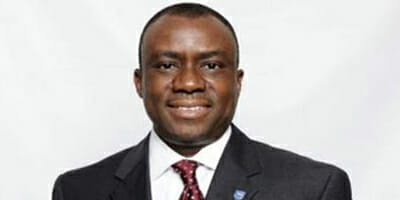The offices of Nigeria’s biggest pension fund manager sit at the end of a quiet side street on Victoria Island, Lagos’s bustling financial capital.
Inside Stanbic IBTC’s aptly named Wealth House, indicative of Nigeria’s growing savings culture, a throng of customers jostle to query staff on pension matters. Four flights up, 48-year-old chief executive Demola Sogunle is just back from a whistle-stop tour to southern Nigeria, where he is cajoling state governments to introduce a new defined contribution pension scheme for their public sector employees.
It’s easy to see why Nigeria’s pension sector could become one of the fastest growing in the world. In 2004 root-and-branch reform modeled on the pension systems of Mexico and Chile introduced a compulsory defined contribution scheme for all public and private sector employees.
Twenty-odd pension fund administrators (PFAs) where set up to manage the windfall as employees began to save 15 per cent of their monthly salaries, including employer contributions. Nigeria’s defined contribution assets have steadily grown to $20 billion, but are still only a fraction of what the working population saves. As more people come on board, forecasts predict total pension assets will grow by 30 per cent a year, making Nigeria’s savings pot worth $75 billion by 2020.
Like other PFAs, investment strategy at Stanbic IBTC, managed in house by a team of 14, is deliberately cautious to preserve capital and keep Nigerians, with a reputation for eagle-eyed scrutiny of their pension assets, saving.
“Every contributor has their own personal account and we find they check the value of their pension fund on a daily basis. They don’t mind making money but they’ll ring you if you lose any,” says Sogunle. Strategy is also guided by strict rules in a country where pension funds can’t invest outside Nigeria without presidential approval.
Mitigating inflation
As it is, Stanbic IBTC has one of the largest equity exposures among its peers with 16 per cent of its $6 billion assets under management invested in listed Nigerian equities.
Other than this, it has a 65-per-cent allocation to government bonds and a 10-per-cent allocation to money markets with the balance in corporate bonds.
The pension manager saw annual returns of 15 per cent last year but Nigeria’s raging inflation left an adjusted return of just 2 per cent.
“The single biggest problem for us is high inflation and how to mitigate it,” says Sogunle. Still “uncomfortable with derivatives,” regulators prohibit any kind of hedging, although he expects plain vanilla instruments will begin to emerge as Nigeria’s regulator, the National Pensions Commission (PenCom), increasingly sees the market “from the saver’s perspective.”
The battle with inflation is one of the reasons Sogunle is enthused by new opportunities emerging in Nigerian infrastructure, outlined in reforms in 2010.
The government wants pension funds to help finance roads, ports and power plants and is now pushing an asset class that could be key to getting around the inflation hitch. Matching long-term liabilities (60 per cent of IBTC’s contributors are below the age of 40) with long-term assets without the punitive inflation hit from Nigeria’s federal government bonds, yielding 16 per cent and effectively wiping out long-term gains, is Sogunle’s biggest bugbear.
He is looking at Macquarie’s Africa Infrastructure Investment Fund, which has a sub-fund customised for Nigeria PFAs. There is still no local infrastructure fund or infrastructure bond for investors to buy into and, under the new rules, infrastructure investment is limited to 20 per cent of a manager’s assets.
National boundaries
Stanbic IBTC is also exploring other alternative asset classes including private equity, asset-backed securities and real-estate investment trusts. It plans a 5-per-cent allocation to private equity and is exploring opportunities with funds run by African Capital Alliance and Aureos Capital.
“They both have sub-funds that are compliant with what Nigerian pension funds can do,” he says.
Rules guiding private equity investment stipulate that managers must invest in funds that have at least 75 per cent of their assets in Nigeria. It leaves a 25-per-cent window of exposure to assets outside Nigeria in what could be pension funds’ first chance to tap foreign markets.
Far from being frustrated by the limited investment universe, Sogunle says it’s right that Nigeria’s pension funds invest at home for now.
“Every part of the Nigerian economy needs massive investment. We get good returns and our liabilities are all in naira anyway.”
He also believes local investors are best positioned to benefit once Nigeria’s equity market “takes off” – at the moment many of the biggest corporate names in Nigeria aren’t listed on the exchange. He does acknowledge the buffeting of foreign flows hitting the portfolio however, like when Nigeria was included in JP Morgan’s benchmark emerging market debt index last year.
“We see these flows and we have to anticipate their impact.” It is why Stanbic IBTC run a mainly passive strategy but swing into active mode during periods of volatility.
Untapped opportunity
Defined contribution take-up in Nigeria is still fraught with challenges. Under the constitution, the 36 states that make up Nigeria’s federation are now responsible for introducing the new scheme.
The government reformed the system in 2004 but only six states have signed up although 10 “are in the process” of doing so.
Nor does the new pension scheme tap Nigeria’s vast informal work force. Regulator PenCom estimates that 60 per cent of Nigeria’s 80 million-strong working population is actually in the informal sector; it is planning how best to draw these potential savers into the scheme through attaching benefits to paying into schemes and using technology such as mobile phones.
But for Sogunle all this just represents opportunity. Pointing out that since reform in Mexico 15 years ago, 65 per cent of that population now save and pension assets have swollen to $140 billion, he believes Nigeria with its population of 162 million has only just begun. “The savings culture is there – look at our banking deposits – what we’ve achieved so far is just a drop in the ocean.”



